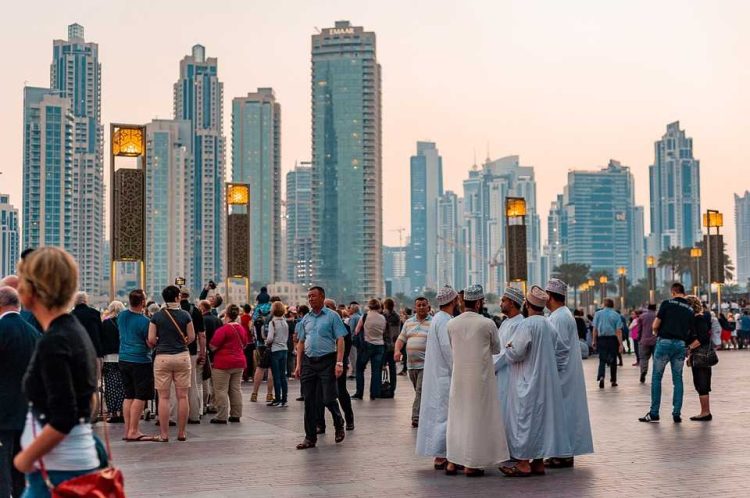Cultural Diversity in Dubai A Tapestry of Traditions and Customs
Dubai, a global metropolis in the United Arab Emirates, is renowned for its towering skyscrapers, opulent shopping malls, and luxurious lifestyle. However, beyond its glitz and glamour lies a rich tapestry of cultural diversity, shaped by its multicultural population and historical influences.
A Melting Pot of Cultures:
Dubai’s population of over 3.3 million people comprises a diverse blend of nationalities, with Emiratis making up only about 11%. The majority of the expatriate population comes from South Asia (India, Pakistan, Bangladesh), followed by other Asian countries (Philippines, Sri Lanka), the Middle East, and Western nations.
This cultural diversity is evident in the city’s vibrant neighborhoods, each with its own distinct character and flavor. From the bustling souks of Deira to the cosmopolitan streets of Jumeirah, Dubai offers a kaleidoscope of cultures, traditions, and customs.
Embracing Cultural Influences:
Dubai’s cultural landscape reflects the influences of various civilizations that have interacted with the region over centuries. Arabic culture forms the foundation, evident in the city’s architecture, language, and religion. However, influences from Persian, Indian, African, and European cultures have also enriched Dubai’s cultural tapestry.
This blend of cultures is manifested in the city’s cuisine, art, music, and festivals. Emirati cuisine, for instance, incorporates spices and flavors from neighboring countries, while traditional handicrafts like pottery and weaving showcase intricate designs inspired by diverse cultures.
Celebrating Cultural Diversity:
Dubai embraces its cultural diversity through various initiatives and events. The Dubai International Film Festival showcases films from around the globe, while the Dubai Global Village offers a glimpse into different cultures through pavilions representing various countries.
The city’s art scene also reflects its multicultural identity, with galleries showcasing works by artists from diverse backgrounds. Traditional Emirati music, such as Al Ayyala, coexists alongside contemporary genres like pop and hip-hop.
Respecting Cultural Differences:
While Dubai is a cosmopolitan city, it is important to be mindful of local customs and traditions. Visitors should dress modestly, especially in public areas, and refrain from public displays of affection. During Ramadan, Muslims abstain from food and drink from sunrise to sunset, and it is respectful to avoid eating or drinking in public during this time.
Benefits of Cultural Diversity:
Dubai’s cultural diversity brings numerous benefits to the city. It fosters a sense of tolerance and understanding, promotes creativity and innovation, and enhances the city’s global appeal. The diverse workforce contributes to Dubai’s economic growth, while the cultural richness attracts tourists and enriches the lives of residents.
Conclusion:
Dubai’s cultural diversity is a defining characteristic of its identity. It sets the city apart as a vibrant hub where cultures converge, traditions intertwine, and new experiences emerge. Embracing this diversity is essential to understanding and appreciating the true essence of Dubai.
Cultural Diversity in Dubai A Tapestry of Traditions and Customs


0 Comment